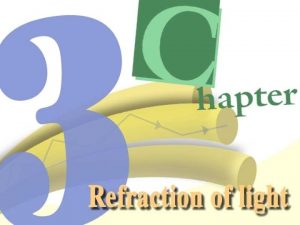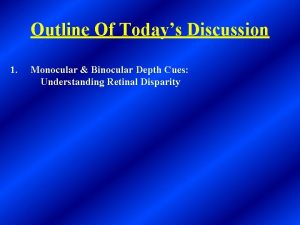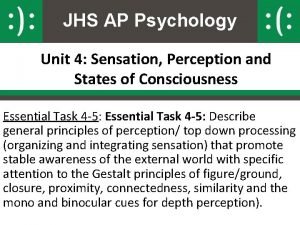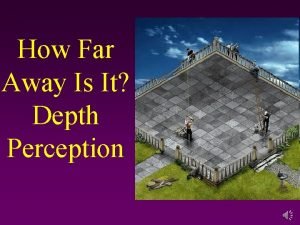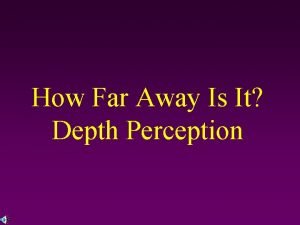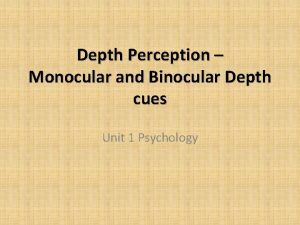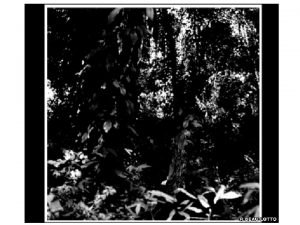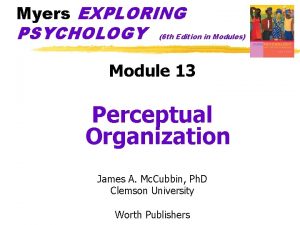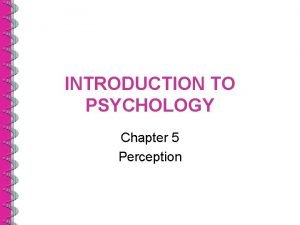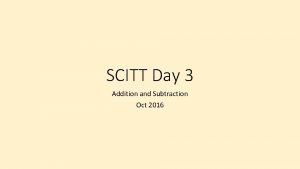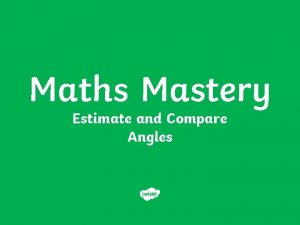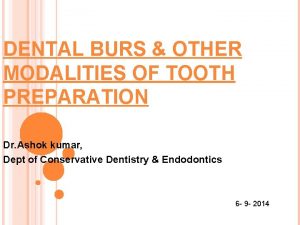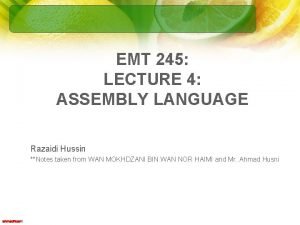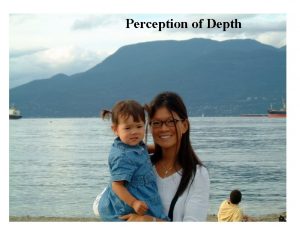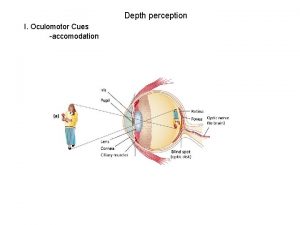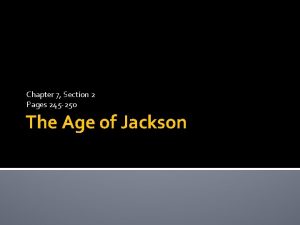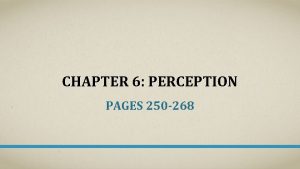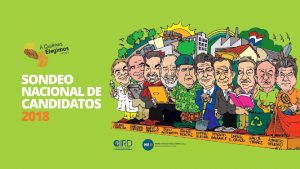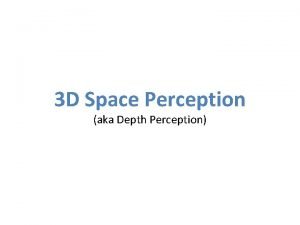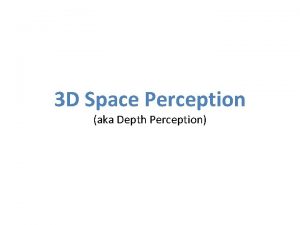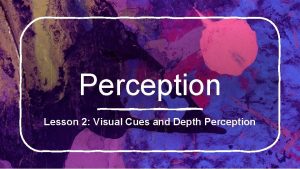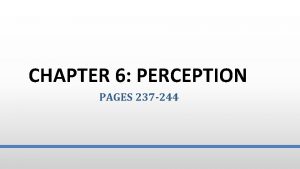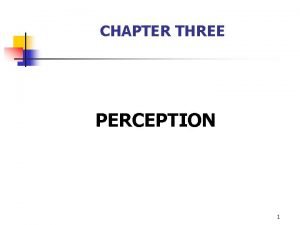Chapter 6 Perception Pages 245 250 Depth Perception

















- Slides: 17

Chapter 6: Perception Pages 245 -250

Depth Perception: The Visual Cliff Experiment Depth perception – the ability to see objects in three dimensions, although the images that strike the retina are twodimensional - enables us to judge distances. Gibson and Walk (1960) suggested that human infants (crawling age) have depth perception. Even newborn animals show depth perception. 2

Depth Perception – Binocular Cues • Binocular Cues – depth cues, such as retinal disparity and convergence, that depend on the use of two eyes • Retinal disparity – by comparing images from two eyes, the brain computes the difference, the greater the distance between the two images, the closer the object • 3 -D movies rely on retinal disparity • Convergence - muscles rotate inward when viewing an object nearby; the greater the inward strain, the closer the object

Two views of the same scene. The first shows what we would see if we closed our right eye; the second, what we would see if we closed our left eye.

• Point your two index fingers toward each other, about half an inch apart & 5 inches in front of your eyes. Stare above your fingers. • You will see a “finger sausage” as shown in the inset. Try this! Roll a sheet of paper into a tube. Look through tube with right eye. Hold up left hand next to tube. Continue to focus ahead. You should see a hold in the palm of your hand!

Binocular cues • • • . Convergence: Your two eye balls focus on the same object. In doing so they converge. The angle of convergence is smaller when the eye is fixating on far away objects. In simple terms: YOUR EYES TURN IN TOWARD EACH OTHER! Try this! • Hold your index finger in front of your nose and move it away and toward yourself. • Notice what your eyeballs are doing…. • Try this with a partner; watch his/her eyes.

Monocular Cues • Depth cues, such as interposition and linear perspective, available to either eye separately • Monocular cues provide size, distance and location information

Monocular Cues Relative Size: If two objects are similar in size, we perceive the one that casts a smaller retinal image to be farther away. 8

Monocular Cues Interposition: Objects that block other objects tend to be perceived as closer. 9

Monocular Cues Relative Clarity: Because light from distinct objects passes through more light, we perceive hazy objects as farther away than sharp, clear objects.

Monocular Cues Relative Height: We perceive objects that are higher in our field of vision to be farther away than those that are lower. 11

Monocular Cues Texture Gradient: There is a gradual change in appearance of objects from coarse to fine. The closer the object is, the clearer the gradient, or degree of detail. The farther away it is, the smoother and less detailed the texture becomes.

Monocular Cues Relative motion: Objects beyond the fixation point appear to move with you; objects in front of the fixation point appear to move backward—the further they are from the fixation point, the faster they seem to move 13

Monocular Cues Linear Perspective: Parallel lines, such as railroad tracks, appear to converge in the distance. The more the lines converge, the greater their perceived distance. 14

Monocular Cues Light and Shadow: Nearby objects reflect more light into our eyes than more distant objects. Given two identical objects, the dimmer one appears to be farther away Shadows are also clues because our brains assume that light comes from above. 15

Movement Perception - Stroboscopic Movement • Seeing a rapid series of slightly different images right after the other as movement! • Examples: Movies, cartoons, or a flipbook

Movement Perception - Phi phenomenon • Two adjacent stationary lights blink on and off in quick succession. • We perceive it as a single light moving (Ex. a moving arrow)
 Printed pages vs web pages
Printed pages vs web pages Refraction through a semi-circular glass block
Refraction through a semi-circular glass block Binocular disparity
Binocular disparity Ap psychology unit 4
Ap psychology unit 4 Height cues
Height cues Cues of depth perception
Cues of depth perception Is interposition monocular or binocular
Is interposition monocular or binocular Binocular cues
Binocular cues Nvg depth perception
Nvg depth perception Depth perception
Depth perception Monocular cues
Monocular cues Use a number line to solve 245-137
Use a number line to solve 245-137 245 angle
245 angle 245 prime factors
245 prime factors What is line angle in dentistry
What is line angle in dentistry Contractor acquired property
Contractor acquired property Ge 245
Ge 245 Emt 245
Emt 245

